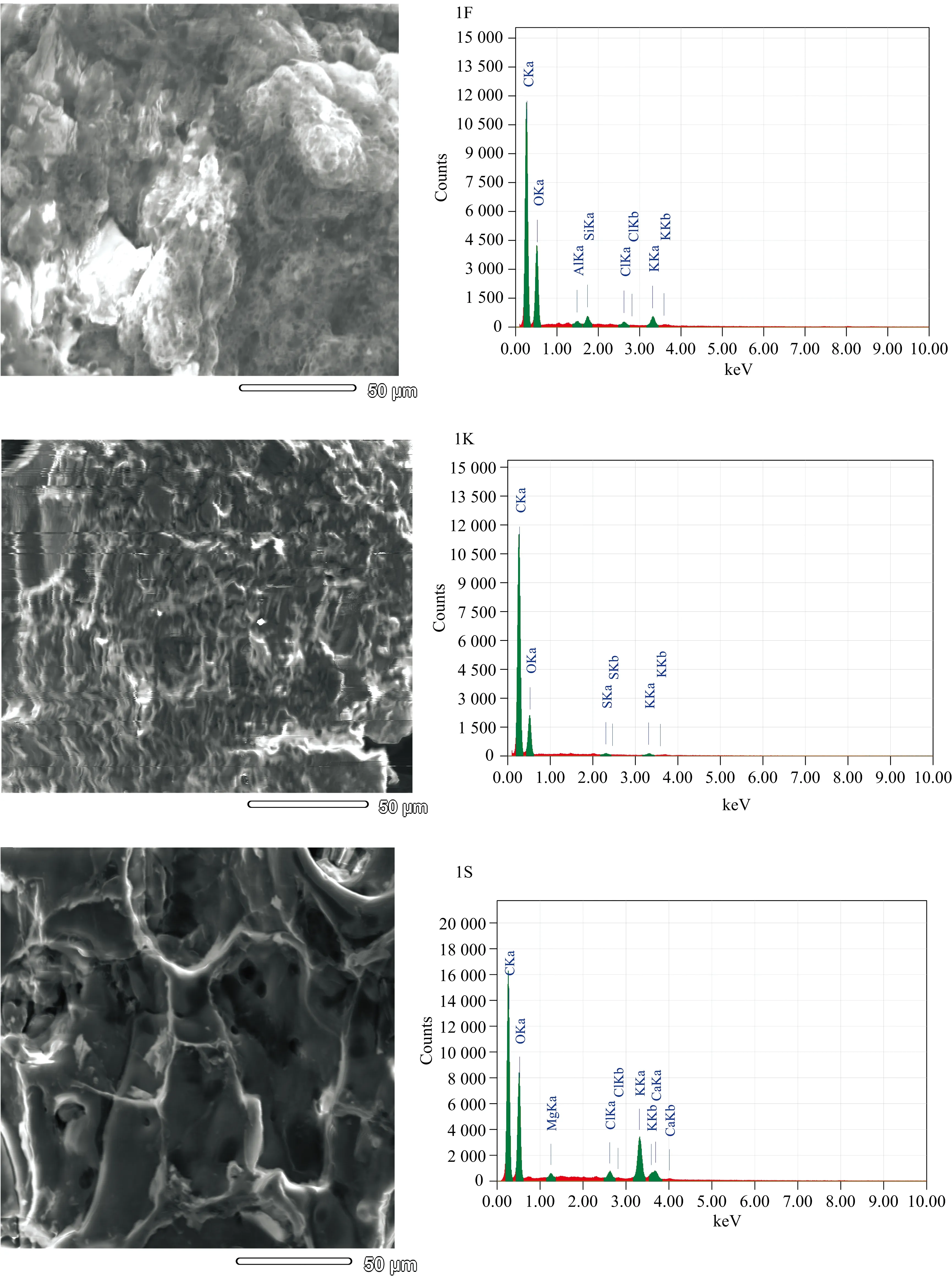Infrared Spectroscopy and Morphological Assessments on the Nutritional Value of Prickly Pear Fruit
2021-02-03MoamenRefatAmnahAlsuhaibaniMohamedNagaty
Moamen S.Refat,Amnah M.Alsuhaibani,Mohamed Nagaty
1.Department of Chemistry,College of Science,Taif University,Taif 21944,Saudi Arabia 2.Department of Physical Sport Science,Princess Nourah bint Abdulrahman University, Riyadh 13415-7132,Saudi Arabia
Abstract The prickly pear fruit helps in combating viral based infections.It is used to treat diabetes and declared to possess hypoglycemic effects.There is also record of the usage of the fruit in the olden days as a remedy for diabetes,lipid disorders,inflammation,ulcers,and pharmacologic side effects.The chemical composition and nutritional values of skin,flesh and seed of prickly pear fruit were investigated and discussed on a dry weight situation.The infrared spectra as well as scanning electron microscopy (SEM) techniques were used to identify the functional groups of carbohydrates,amino acids,and protein.The infrared spectral data of all three (skin,flesh,and seeds) species were recorded and assigned to the presence of distinguish peaks that referred to the three different sugars (glucose,fructose and saccharose) and cyclic aliphatic hydrocarbons moieties.On the other hand,the SEM is a powerful tool to investigate the morphological features of the components.SEM assays were examined on the surfaces of skin,flesh and seed branches showing a small particle that tends to form clusters with different shapes compared to each other.The Energy-dispersive X-ray spectroscopy (EDX) is an analytical technique used for the elemental analysis or chemical characterization of a sample.The EDX spectral technique of the skin,flesh and seeds were confirmed the presence of different essential and useful elements such as carbon,oxygen,magnesium,calcium,potassium,sulfur,aluminum,silicon,chloride,and phosphorus.
Keywords Infrared spectroscopy;SEM;EDX;Prickly pear fruit;Skin;Flesh;Seed
Introduction
Currently,only prickly pears are included in this genus of about 200 species distributed throughout most of the Americas[1].Chollas are now separated into the genus Cylindropuntia,which some still consider a subgenus of Opuntia.Austrocylindropuntia,Corynopuntia and Micropuntia are also often included in the present genus,but like Cylindropuntia they seem rather well distinct.Brasiliopuntia and Miqueliopuntia are closer relatives of Opuntia.
The most commonly culinary species is the Indian Fig Opuntia (O.ficus-indica).Most culinary uses of the term “prickly pear” refer to this species.Prickly pears are also known as “tuna”,“nopal” or nopales,from the Nahuatl word nōpalli for the pads,or nostle,from the Nahuatl word nōchtli for the fruit;or paddle cactus (from the resemblance to the ball-and-paddle toy).This and similar species are native to Mexico.The genus is named for the Ancient Greek city of Opus[2].
In medical useful the most species of Opuntia contain a range of alkaloids in sample quantities,notably substituted phenethylamines.While the mere presence of such compounds has been confirmed in many species without further details[3],they have been studied more thoroughly in others.Identified compounds of medical significance include 3-methoxytyramine[4],candicine[5],hordenine[6],N-methyltyramine[7],and tyramine[7].The Sicilian prickly pear contains the betalain antioxidants betanin and indicaxanthin,with highest levels in their fruits[8].
1 Experimental
Infrared spectra within the range of 4 000~400 cm-1for the skin,flesh and seeds of the cultivar 1 (sweetness,red,early ripening) and cultivar 2 (long fruit,green color,late ripening) were recorded from KBr discs using a Shimadzu FT-IR Spectrometer with 30 scans and 2 cm-1resolution.Scanning electron microscopy (SEM) images and Energy Dispersive X-ray Detection (EDX) were taken in Joel JSM-6390 equipment,with an accelerating voltage of 20 kV.
2 Results and discussion
2.1 Infrared spectra


Fig.1 Infrared spectra of skin (S),flesh (F) and seeds (K) of the cultivar 1 and cultivar

Table 1 Infrared spectral bands of skin (S),flesh (F) and seeds (K) of the cultivar 1 and cultivar 2

Table 2 EDX spectra of skin (S),flesh (F) and seeds (K) of the cultivar 1 and cultivar 2
2.2 Scanning electron microscopes and EDX investigations
The chemical analysis results by EDX for the skin (S),flesh (F) and seeds (K) of the cultivar 1 and cultivar 2 showed that the skin,seeds and flesh of prickly pear fruit have a series of some metal salts like magnesium,potassium,aluminum and silicon with chlorides,sulfate or phosphates.The mineral composition depends on the fruit origin and factors of the site of cultivations[10].SEM examinations were checked the surfaces of these branches that show a small particle which tendency to agglomerates formation with different shapes comparison with each other.The chemical compositions of the skin (S) flesh (F) and seeds (K) of the cultivar 1 and cultivar 2 were determined using energy-dispersive X-ray diffraction (EDX).In the EDX profile of these branches (Fig.2 and Table 2),the peaks of the carbon,oxygen,magnesium,calcium,potassium,sulfur,aluminum,silicon,chloride,and phosphorus elements,which constitute the molecules of skin,flesh and seeds of the cultivar 1 and cultivar 2,are clearly identified confirming the proposed structures.

Fig.2 SEM images and EDX spectra of skin (S),flesh (F) and seeds (K) of the cultivar 1 and cultivar 2
